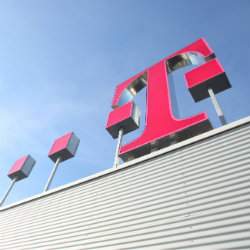
Here are T-Mobile's trouble spots.
Thanks to some data crunching from Tutela Technologies, the below are T-Mobile's five most congested markets. These are the markets where T-Mobile's network is slowing down the most due to customer traffic. Meaning, these are the cities where T-Mobile's network speeds are showing the biggest slowdown during peak usage times:
Figure 1: 
Clearly, California is causing some troubles for T-Mobile.
Here are the markets where T-Mobile's network is showing the best performance in terms of being able to keep pace with customers' demands (it's interesting to note that the company's headquarters is in Bellevue):
Figure 2: 
When questioned on the findings, a T-Mobile representative offered this boilerplate: "We're always expanding our network coverage and enhancing it with new technologies and added capacity for customers." The carrier added that, in the markets listed by Tutela as congested, it is actively deploying more low-band spectrum and densifying its network with either more mid-band sectors or sites.
Of course, overall congestion can be due to a variety of factors, including the number of customers using T-Mobile's network in those markets, the operator's network technology there, the types of phones that customers are using, and the amount of spectrum T-Mobile has devoted to its network in each of these cities.
Tutela, for its part, offered these observations on its findings regarding T-Mobile: "In T-Mobile's less congested cities, there was a much higher percentage of data traffic across 1900MHz, with less traffic over lower band spectrum particularly 700MHz," the firm wrote, adding that the majority of T-Mobile's traffic in its more congested cities went across its 1700MHz AWS-1 band.
Tutela also noted that T-Mobile appears to count more customers in the markets where it sees network congestion, suggesting that the operator's network congestion may stem from the fact that it has a lot of customers in congested markets.
Now, the next obvious question though is: How did Tutela come up with these numbers?
Tutela inserts a tiny bit of testing software into some US smartphones, software that runs in the background and actively tests things like network speeds. To do this, Tutela works with Android and iOS app developers to get its software installed into their apps, and then that software runs in the background of those apps after mobile users download them. The company then collects and sells that data (which doesn't include any information that can identify a user or their device, including email addresses, IDFA, AAID, device ID, or IP addresses) and splits the resulting profits with participating app developers. The company counts over 3,000 participating app developers and over 250 million phones running its software.
For the above charts specifically, Tutela looked at the data from around 200 of the top markets in the US. The company looked at the average speeds available during off-peak hours (basically in the middle of the night, when no one is using the network) and the average speeds available during on-peak hours (basically during afternoon rush hour, when everyone is using their phone) and compared the difference between those speeds. You can tell how congested a network is by how much slower it runs during peak times of usage.
If you found this data interesting, make sure to check out Tutela's figures for Sprint.
And if you're a Verizon or AT&T customer, just wait: We're going to publish similar results for them in the coming weeks.
— Mike Dano, Editorial Director, 5G & Mobile Strategies, Light Reading | @mikeddano
About the Author(s)
You May Also Like




_International_Software_Products.jpeg?width=300&auto=webp&quality=80&disable=upscale)







